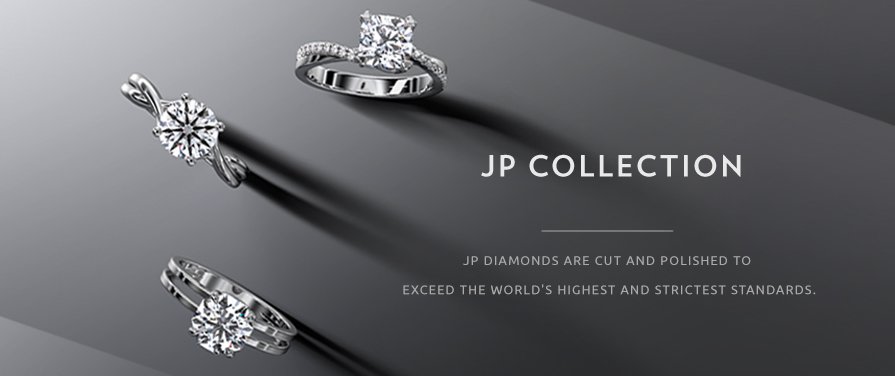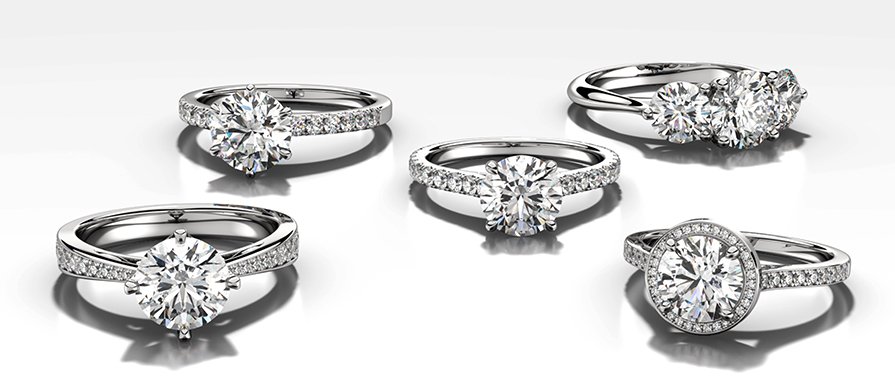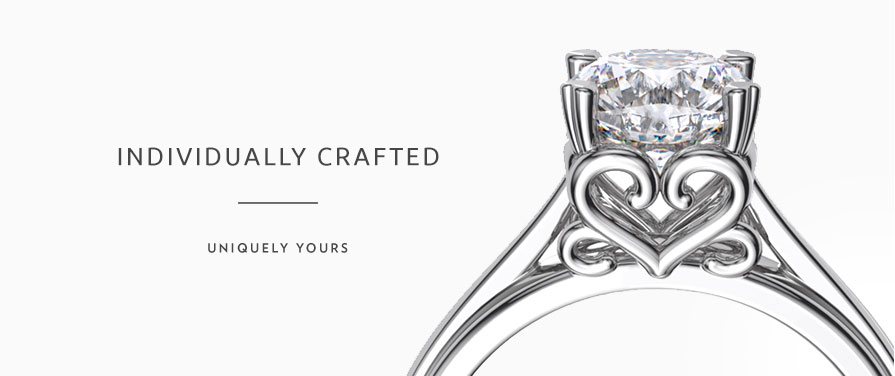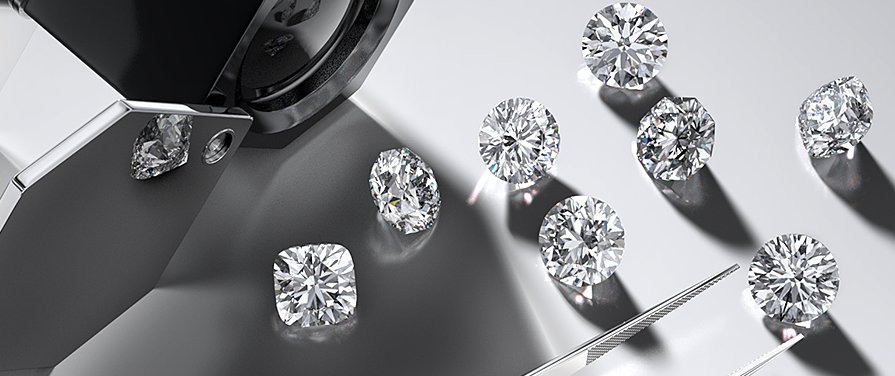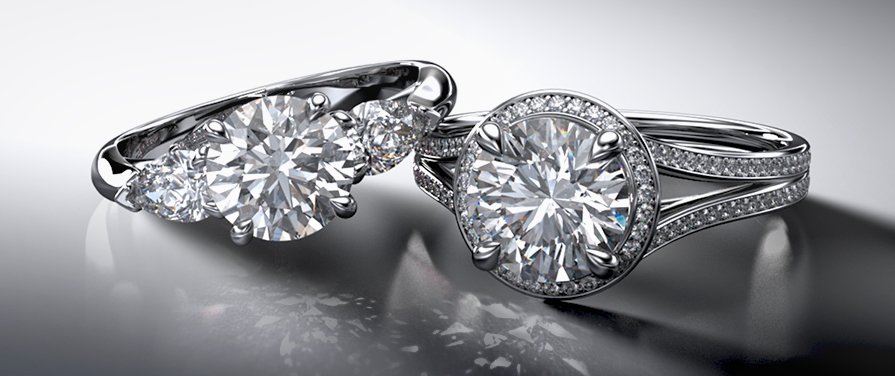METAL
Gold and platinum are two of the most commonly used metals for jewellery. There are different variations of gold, with the more popular ones being yellow gold, white gold and rose gold.

Purity of Gold
Pure gold is not suitable to be used for ring settings because as a pure metal, it is too soft for jewellery purposes. Hence, it needs to be combined with other metals to form alloys, so as to increase its strength and durability. The purity of gold or how much gold is in the piece of jewellery, uses the unit 'karat' or 'KT'. One unit of karat is equivalent to 1/24 part, and 24 karat represents pure gold.
The table below shows the percentage of gold content in different Karat:
|
Category |
Amount of Gold |
|
24K |
99.99% |
|
22K |
91.6% |
|
18K |
75% |
|
14K |
58.5% |
|
10K |
41.7% |
|
6K |
25% |
18KT gold is the recommended karat for ring setting due to its durability for daily wear and its visual appeal. As earlier mentioned, pure gold, 24KT and/or 22KT are unsuitable due to its softness and tendency to get scratched easily. On the other hand, lower gold karat, even though it is more durable, the visual appearance is not attractive enough for jewellery.
Besides, 18KT gold is less costly compared to platinum and fuss-free as most jewellery craftsmen are able to do polishing and re-plating.
|
18KT White Gold |
25% mixture Copper, Nickel, Zinc and/or Palladium |
|
18KT Yellow Gold |
25% mixture Copper, Silver, Zinc and/or Cobalt |
|
18KT Rose Gold |
25% mixture Silver, copper |
White Gold
White gold is an alloy of yellow gold with at least one other white metal such as Nickel or Palladium. For all of our white gold, Palladium is used instead of Nickel because some people are allergic to Nickel, which may result in irritation. Moreover, Palladium belongs to the Platinum group of metals, which appear whiter than Nickel alloy.
Typically, white gold is plated with rhodium which gives the jewellery a shinier and whiter appearance. Rhodium
Rose Gold
Rose gold is achieved when yellow gold is alloyed with copper. Since Copper has a reddish-brown
Platinum
Platinum is one of the rarest metals on earth and is white in colour by nature. Unlike white gold, rhodium plating is not required. It is renowned for its superior strength and durability and can be used in almost its pure form (90% - 95%). It is also hypoallergic and hence, suitable for those with sensitive skin.
White Gold vs Platinum
Two of the most popular materials in making engagement rings are Gold and Platinum. But what’s really the difference between these two and which is suitable for you?
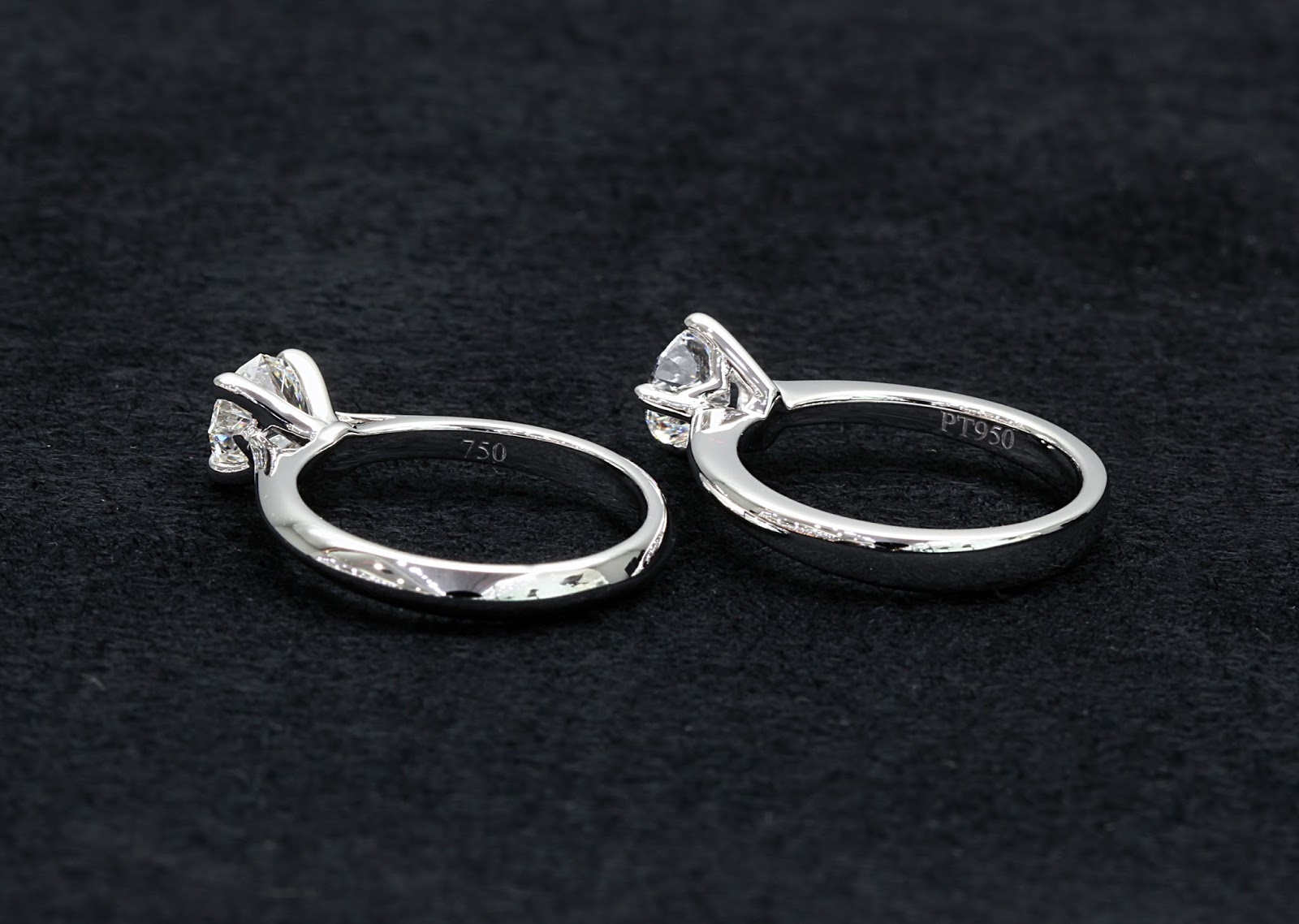
1) The composition - Gold is a precious metal used for coinage, jewellery, electronics and other industries since its discovery. However, because of the softness of pure (24K) gold, it is usually alloyed with other metals to make it durable for jewellery.
Gold comes in 24K, 22K, 18K, 14K and so
Let’s say for example an 18kt white gold - it is made by mixing 75% (750 parts per thousand) gold with 25% (250 parts per thousand) of other metals such as silver and palladium while 18K yellow gold is made by mixing 75% gold with 25% other metals such as copper and zinc. So the amount of gold is the same but the alloy is different, and these alloys can modify the gold’s hardness, ductility,
Nickel was commonly used in white gold. However, it is found to cause skin reactions, and thus, we never use this alloy. For all JannPaul white gold
Platinum
2) Physical Properties
Color : Metals like palladium have a bleaching effect that gives gold a white-ish result depending on the exact formulation. To make white gold even whiter, rings are rhodium-plated. Platinum, on the other hand, is more resistant to wear andtear, and is very white, so it does not need to be rhodium platedlike white gold does.
- Weight: Platinum is much denser than white gold. Hence, a platinum ring would feel more substantial and luxurious to some. Depending on personal preference, some ladies will still go for the light-weight material for comfort.
3) Durability – Hardness & Malleability.
While it’s true that pure gold is softer than platinum, an 18kt gold alloyed with other metals makes it harder than of a Platinum (Pt 950). So despite being denser, platinum can get scratched a little easier than 18kt gold does. It is
Moreover, an important thing to note is that scratching platinum does not mean material lost;
4) Long-Term Care - While white gold and platinum look very similar, over time white gold will oxidize and its rhodium plating will wear off and fade to a yellowish tinge. Platinum on the other hand, which is naturally white, will not fade to yellow. Nevertheless, once you re-polish and re-plate the white gold ring, it will look white again.
An important thing to note is that white gold is more widely used than platinum; hence more jewellers are able to resize and repair this type of jewellery.
5) Price - Since platinum used in
Both Platinum and White Gold are great metals, It will still boil down to your individual preferences and budget
Strength and Durability
Both white gold and platinum are strong and durable metals, though platinum is slightly stronger, more durable and heavier than white gold.
Colour
Platinum is naturally white and will always maintain its white appearance. White gold has its white appearance when alloyed with other metals, has a similar look to platinum; however, the rhodium plating will eventually wear off due to wear and
Price
Price is constantly changing for both white gold and platinum. Platinum
For more information, you can check out: http://jannpaul-diamonds.blogspot.sg/2016/08/platinum-or-white-gold.html






